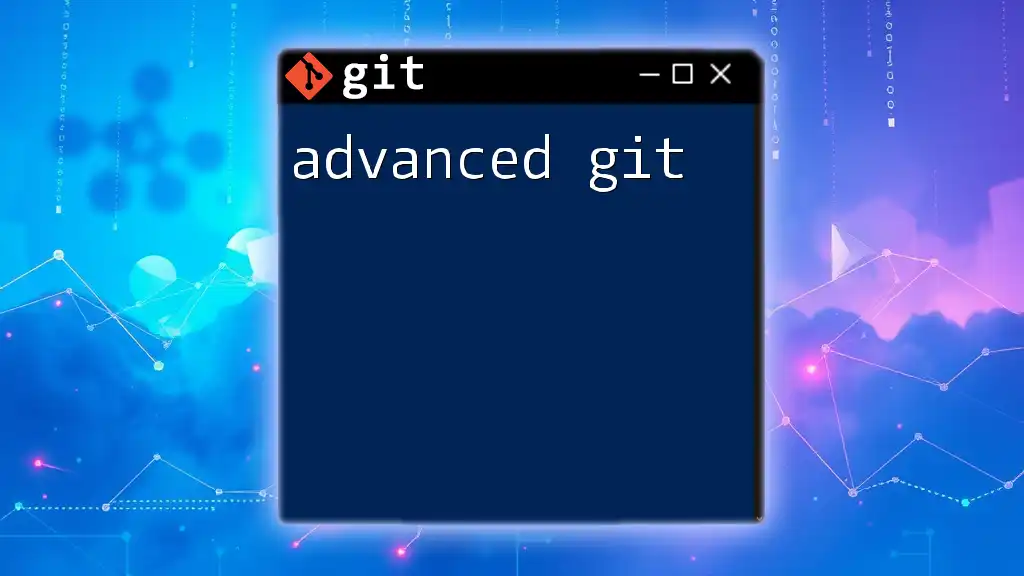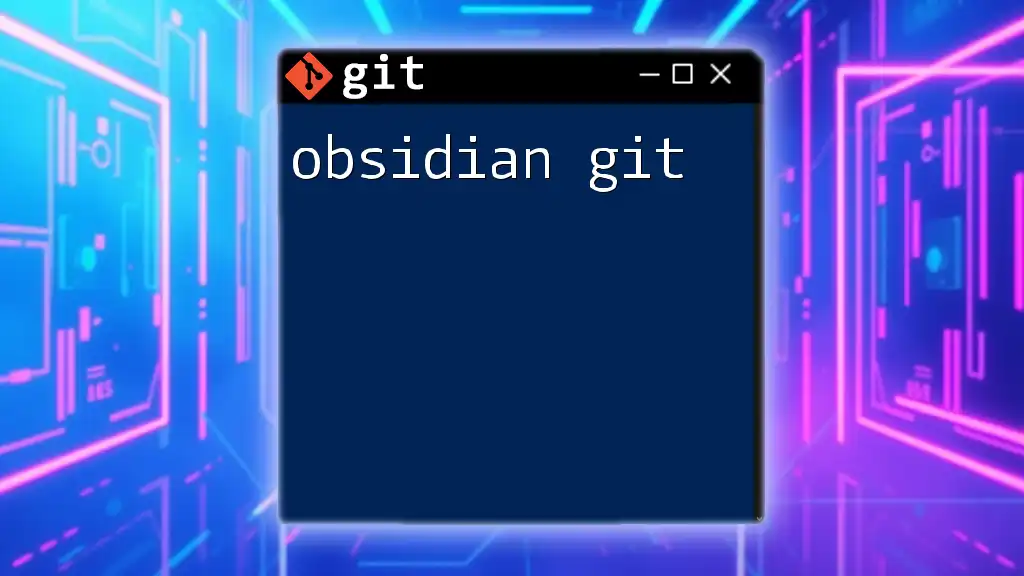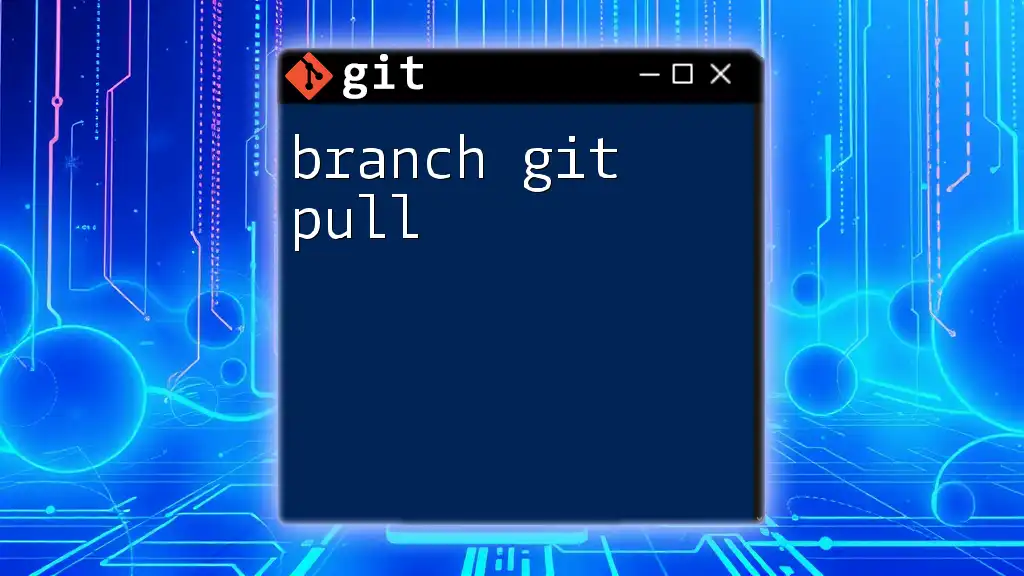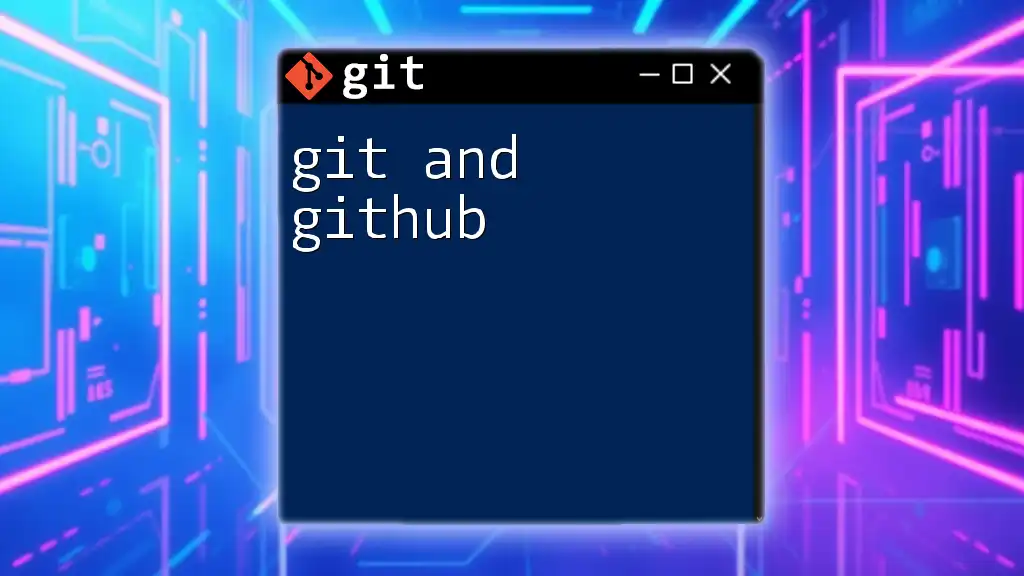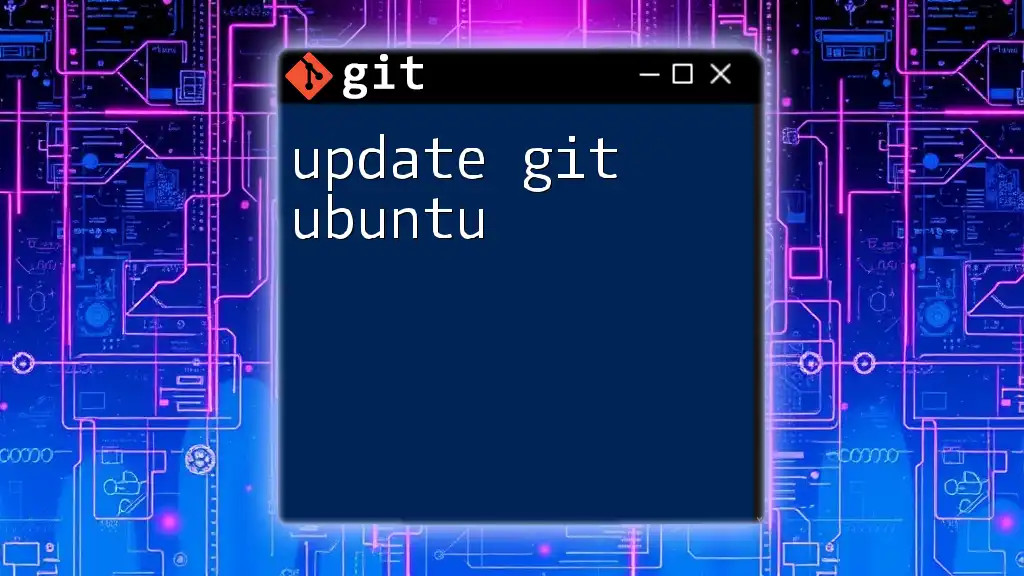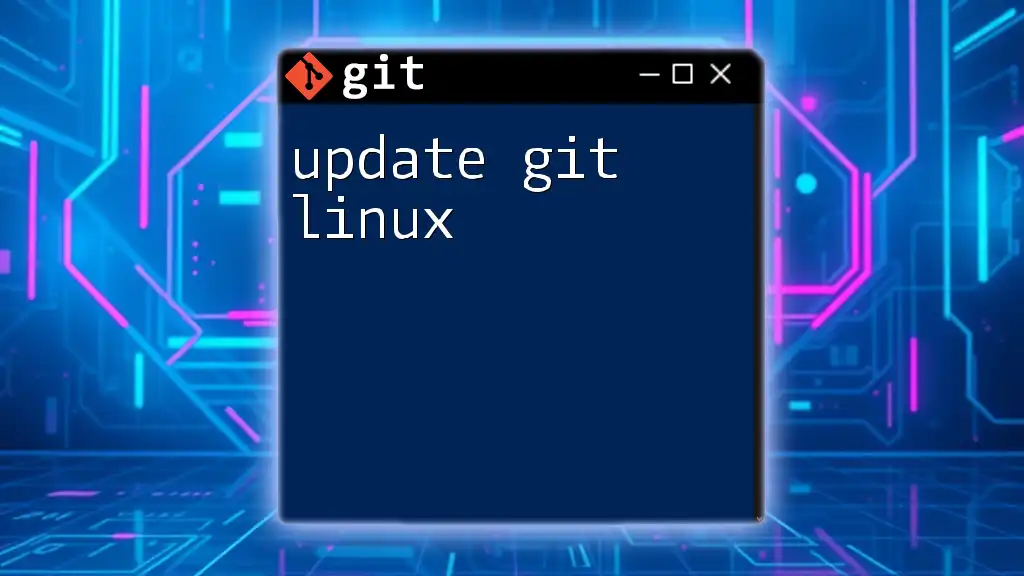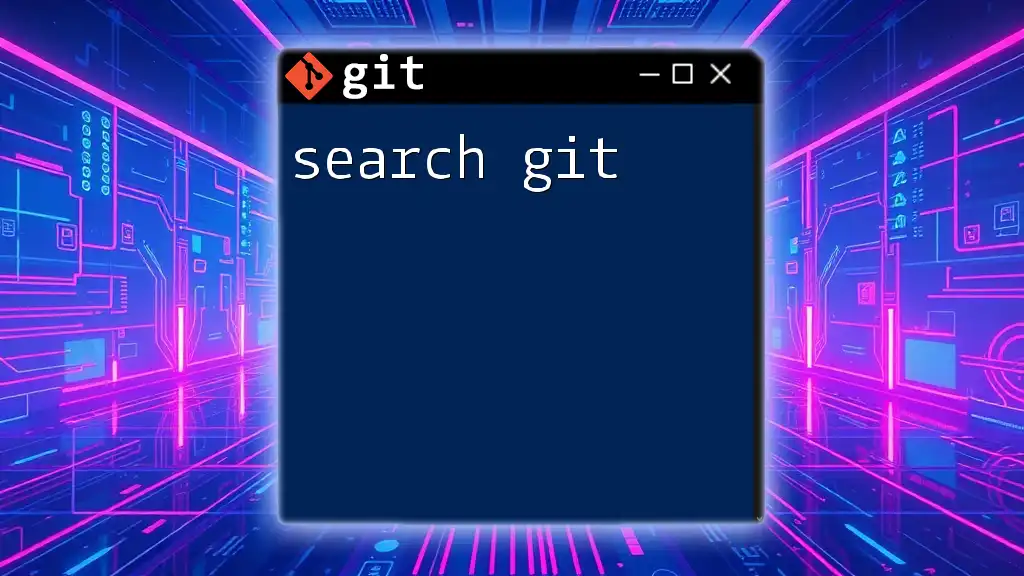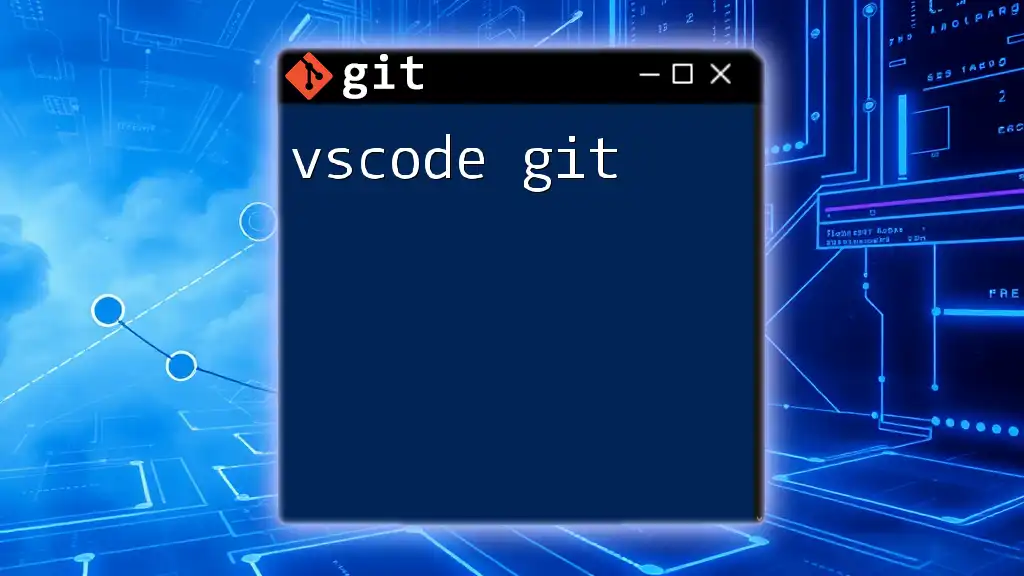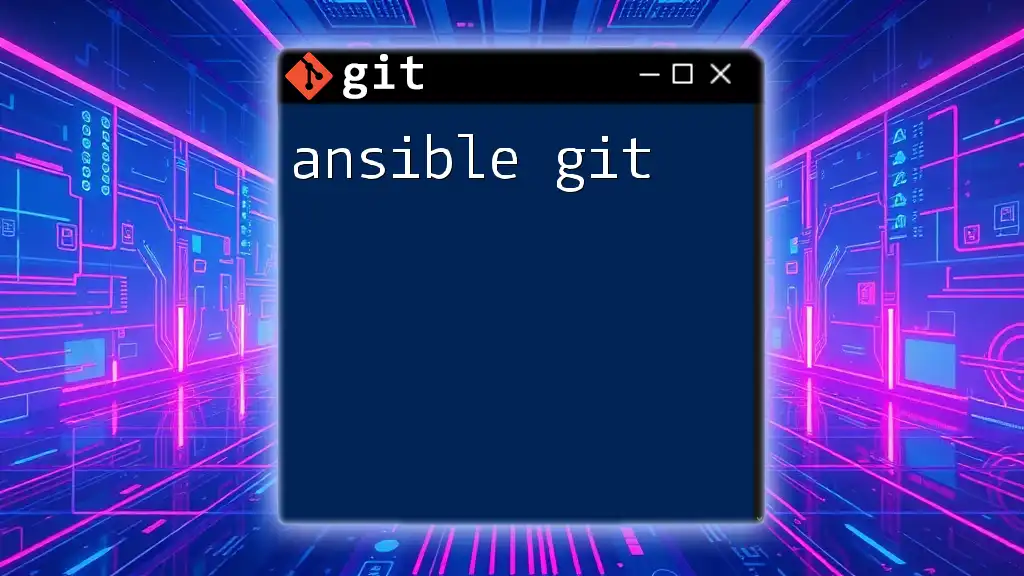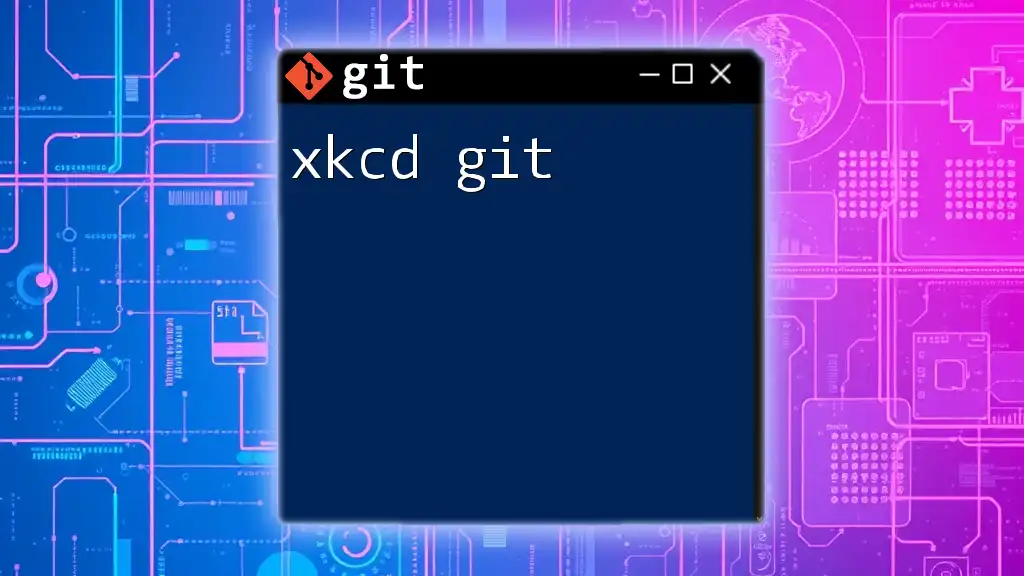Advanced Git encompasses complex version control tasks such as rebasing, branching strategies, and managing merge conflicts to optimize collaboration in software development.
git rebase -i HEAD~3
Key Prerequisites
Before diving into advanced Git techniques, it’s important to have a foundational understanding of basic Git commands and concepts. Familiarity with essential operations such as commits, branches, and merges will enable you to grasp the advanced functionalities that Git offers.
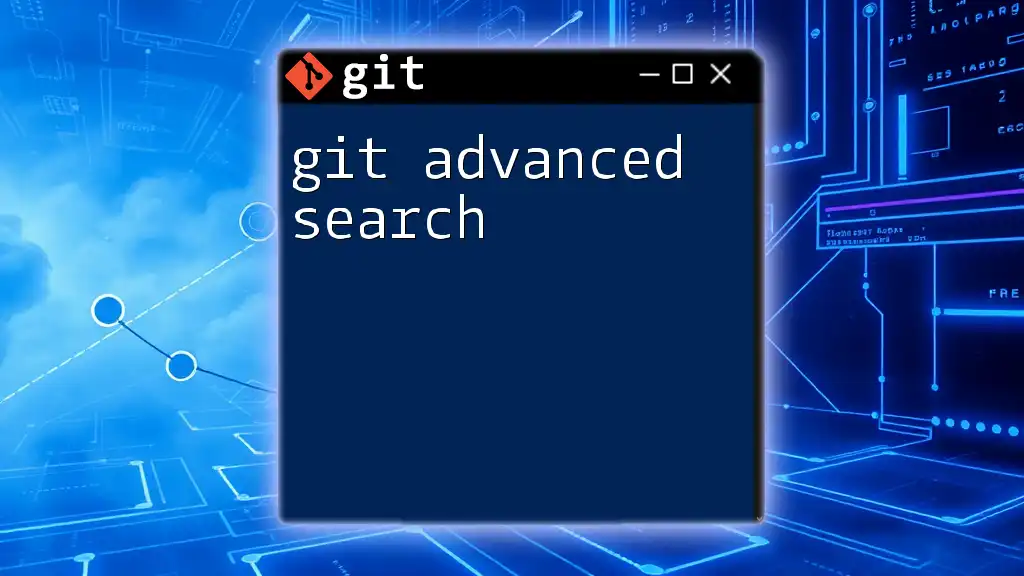
Branching Strategies
Understanding Branching
Branching is a powerful feature of Git that allows you to diverge from the main line of development to work on features, fixes, or experiments without affecting the stable codebase. The basic command to create a branch is as follows:
git branch <branch-name>
This flexibility is essential for teams working on multiple features simultaneously. You can experiment in a branch and then decide to merge it back or discard it, without impacting the main line.
Popular Branching Models
Several branching models have emerged that help teams manage their codebase effectively:
-
Git Flow: This model is great for project versions or releases and uses dedicated branches for features, releases, and hotfixes. It's systematic but can be complex.
-
GitHub Flow: A simplified model suitable for continuous deployment. Developers create a new branch for each feature and merge it back to the main branch after code review.
-
Trunk-Based Development: Focuses on short-lived branches that are merged back into the main branch frequently, encouraging continuous integration.

Advanced Command Usage
Cherry-Picking Commits
Cherry-picking is a method of selecting specific commits from one branch and applying them to another. This is useful when you want to bring over bug fixes or features without merging the entire branch. The command syntax to cherry-pick a commit is:
git cherry-pick <commit-hash>
This command effectively allows you to incorporate changes without the overhead of merging an entire branch.
Rebasing vs. Merging
Understanding when to use rebasing versus merging is crucial in the context of advanced Git functionalities.
- Merging combines two branch histories and keeps the entire record of changes. To perform a merge, you can use:
git merge <branch>
- Rebasing, however, moves or "replays" your commits to a new base. Use this command carefully, as it rewrites history:
git rebase <branch>
While merging preserves the history, rebasing offers a cleaner project history and linear progression. Be mindful of potential conflicts when using rebase since it alters commit history.
Stashing Changes
Sometimes, you may find yourself in the middle of working on a feature, but you need to switch contexts or branches. This is where git stash comes in handy.
The primary command to stash your ongoing changes is:
git stash
You can then return to your earlier state with:
git stash pop
Stashing is like a temporary shelf. It allows you to save your progress without committing incomplete or unstable changes.
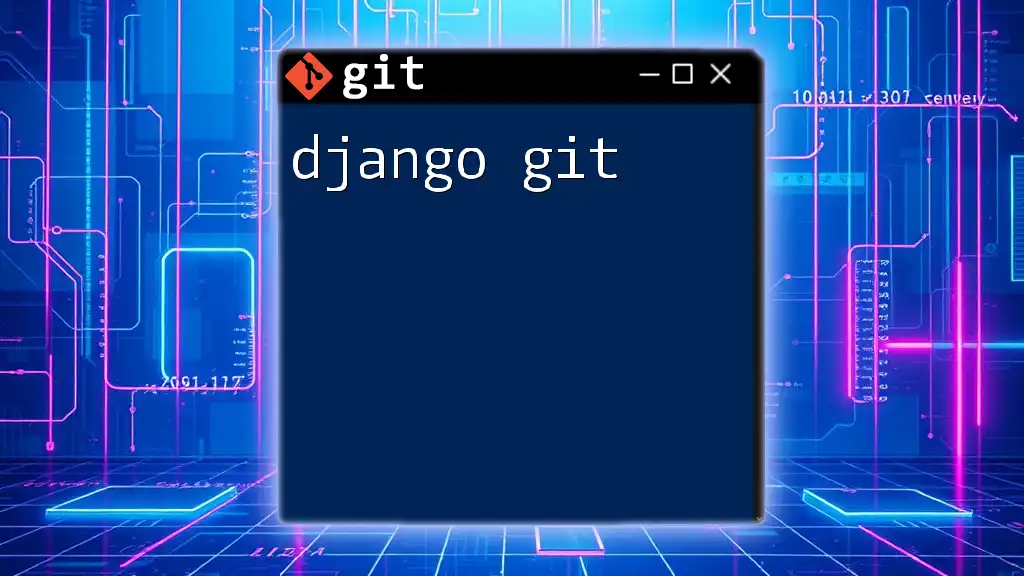
Working with Remotes
Adding and Managing Remotes
In Git, remotes are references to versions of your project that are hosted on the internet or network. You can add a remote repository using:
git remote add <name> <url>
To verify which remotes you have added, execute:
git remote -v
Understanding how to manage remotes effectively is key for collaboration in larger teams.
Fetching and Pulling
It's essential to understand the difference between fetching and pulling in Git.
- Fetching allows you to download changes from a remote without merging those changes:
git fetch <remote>
- Pulling is a combination of fetching and merging changes into your local branch:
git pull <remote> <branch>
This knowledge helps maintain a clean workflow by allowing you to review changes before integrating them.
Pushing Changes
When you’re ready to share your changes with your team, you’ll use the `git push` command. If there are conflicts, you may need to force push your changes:
git push --force
Be cautious with force pushing, as it can overwrite colleagues' changes and lead to data loss. Always ensure you understand the ramifications before executing this command.

Advanced Merge Techniques
Resolving Merge Conflicts
Merge conflicts occur when Git cannot automatically resolve differences between two branches. Identifying and managing these conflicts is an integral part of using advanced Git.
- Identify Conflicting Files: Run `git status` to see which files have issues.
- Resolve the Conflicts: You must manually edit the files to resolve differences and then mark them as resolved using:
git add <file>
- Complete the Merge: After resolving all conflicts, commit your changes to finish the merge process.
Octopus Merges
An octopus merge is a specialized merge that allows you to merge multiple branches in a single command. This is useful in complex projects where you’re integrating numerous features at once.
The command syntax for an octopus merge looks like this:
git merge <branch1> <branch2> <branch3>
Understanding when to use octopus merges can significantly streamline your merging process in collaborative environments.
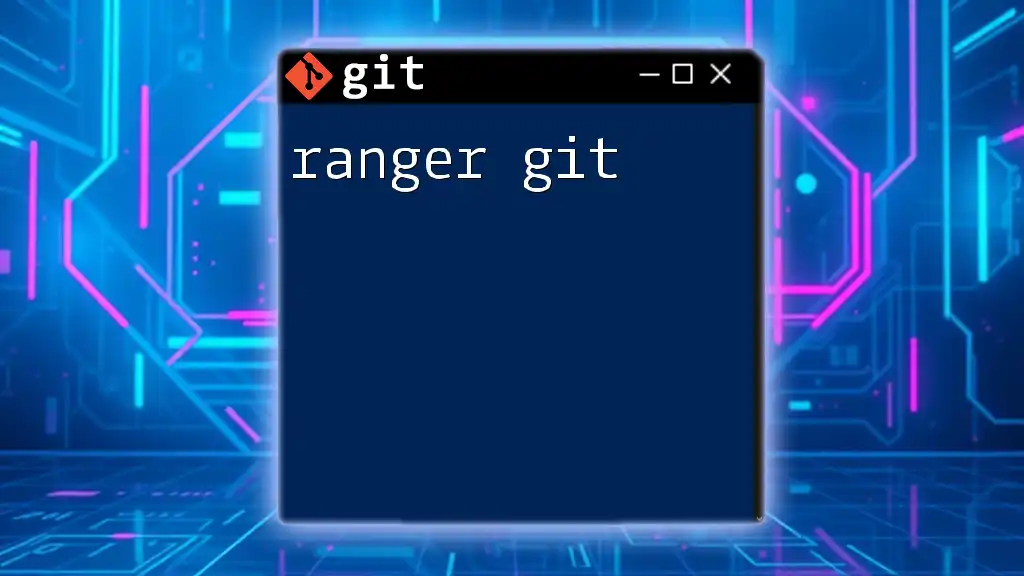
Git Hooks
Introduction to Git Hooks
Git hooks are scripts that run automatically on specific events in the Git lifecycle, allowing you to customize Git’s behavior effectively.
Common Hooks and Examples
- Pre-commit Hook: This hook allows you to run scripts before a commit is made, which can check for certain conditions like code quality:
#!/bin/bash
# Pre-commit Hook
# Check for code style before committing
- Post-commit Hook: This runs after a successful commit, enabling you to trigger notifications or other actions, such as sending a message:
#!/bin/bash
# Post-commit Hook
# Notify team on a successful commit
Incorporating hooks can enhance your workflow and reduce common errors.
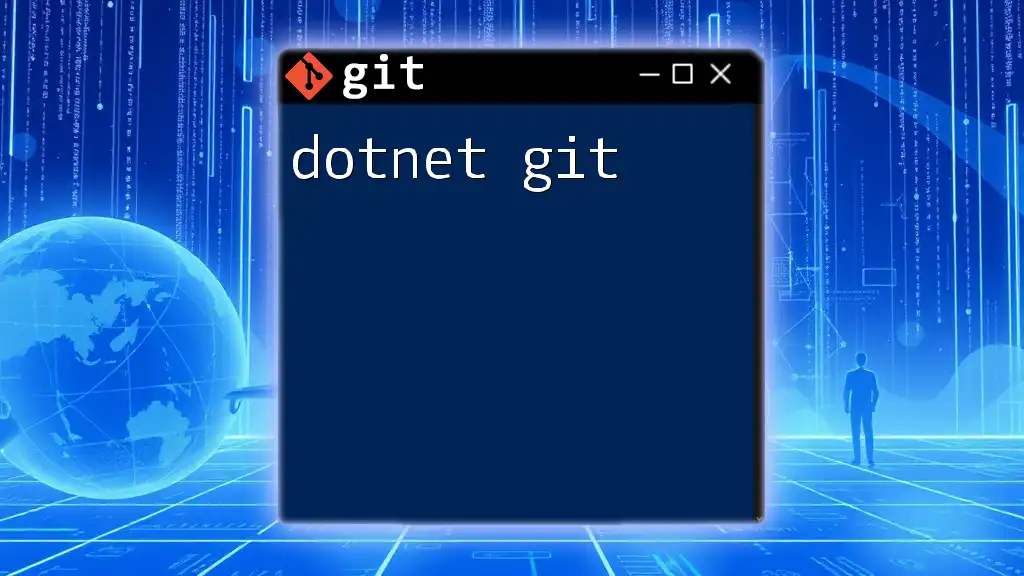
Advanced Configuration Options
Changing Git's Behavior
Git allows you to customize settings on both global and local levels. Set global configurations with:
git config --global user.name "Your Name"
git config --global user.email "youremail@example.com"
Using local configurations allows project-specific settings that override global settings for a more tailored experience.
Custom Aliases
Creating aliases can significantly speed up your workflow in advanced Git by simplifying longer commands.
For example, create a new alias for the `git status` command:
git config --global alias.st status
You can combine multiple commands into a single alias, further enhancing productivity.

Conclusion
Utilizing advanced Git features can transform your development process, enabling better collaboration, clearer project histories, and more control over your codebase. The depth of Git’s capabilities offers powerful tools for managing your software projects.
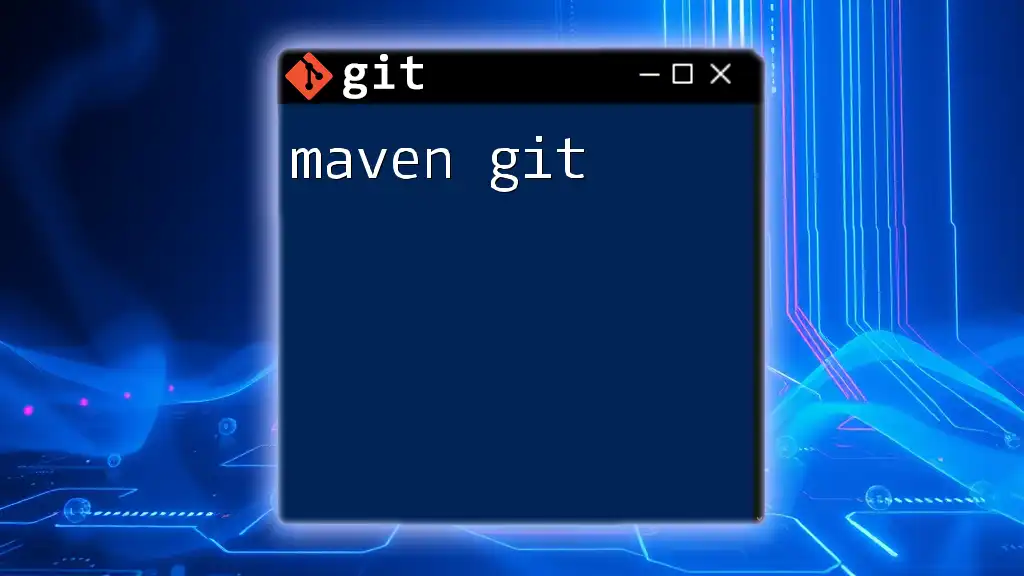
Additional Resources
For those eager to continue learning, many books, online courses, and community forums exist that delve deeper into Git and its functionalities. Joining Git-focused communities can also provide additional support and insights.
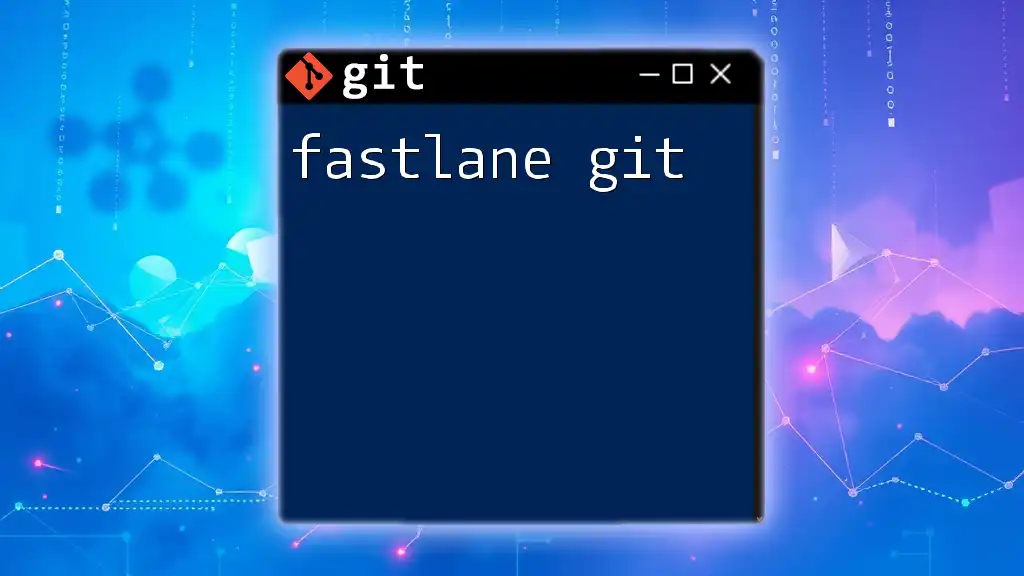
Call to Action
If you want to master advanced Git skills, consider enrolling in our comprehensive training program. This program is designed to take your Git knowledge to the next level, benefiting both you and your team!

